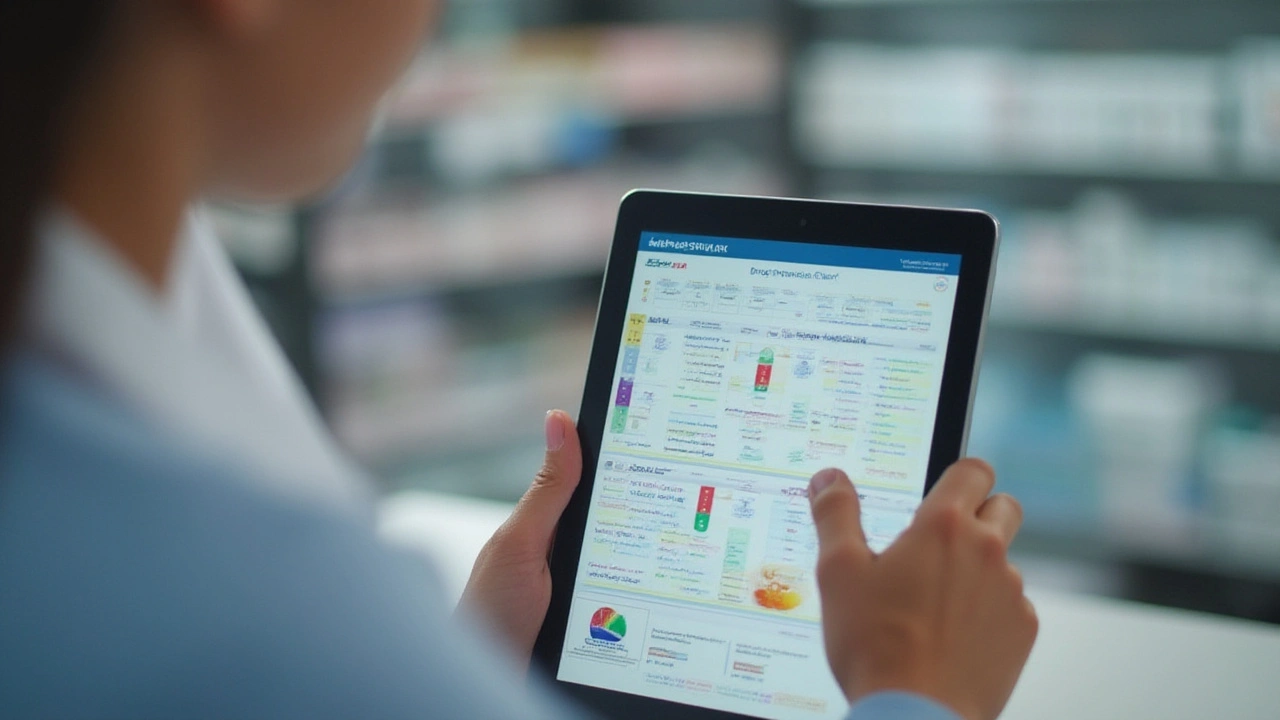Drug Interaction Chart: Your Go-To Guide for Medication Safety
Ever wondered if the pills in your medicine cabinet are actually safe to take together? You're not alone. Drug interactions are more common than you think—and they don't just happen with strong prescriptions. Even simple painkillers, allergy meds, and over-the-counter pills can wind up working against each other, or worse, causing real harm.
Checking a drug interaction chart doesn’t have to feel like decoding a medical mystery. Break it down like this: Every medicine, whether it’s for pain, allergies, or high blood pressure, can mess with your body in different ways. When you mix meds, one might block another, make it way stronger, or give you unexpected side effects. That’s why it’s important to know what combos to avoid.
Think about painkillers. Mixing ibuprofen with certain blood pressure meds can ramp up the risk of kidney problems. Or take antihistamines; pairing them with some antidepressants can make you super drowsy or lightheaded. That’s the type of info real drug interaction charts put front and center—simple, color-coded, clear warnings for what works and what doesn’t.
But how do you spot risky matches if you’re not a pharmacist? Start with the basics. Keep a running list of every med and supplement you take—including the herbal stuff and vitamins. The next time you’re at the doctor’s office or the pharmacy, share the list. Pharmacies often have their own drug interaction tools, and most doctors can quickly look up risky combos on the spot. Don’t be shy about asking. You’re not being a bother—they’d rather answer your questions now than fix a problem later.
If you’ve ever switched a brand-name med for a generic or swapped out one painkiller for another, that’s another spot where interactions can sneak up on you. Generics are usually safe, but check that they’re the same active ingredient as what you’re replacing. Substituting without checking can set you up for accidental double-doses or missed relief.
Most reliable drug interaction charts group meds by type: painkillers, blood pressure meds, allergy pills, and so on. Look for any big warnings (like the red or orange squares), and always pay attention to notes about food, alcohol, or even grapefruit juice. Believe it or not, something as basic as grapefruit can make a cholesterol drug skyrocket in your system.
If you ever feel weird after starting a new med—even if you think it’s unrelated—bring it up with your doctor or pharmacist. Don’t wait for it to get worse. Most people don’t connect side effects right away, but a quick chat can save loads of stress later on.
Bottom line: Use a drug interaction chart as your backup, not your only safety net. Stay organized, ask questions, and keep your med list handy. Your body—and your peace of mind—will thank you for it.
How to Read a Drug Interaction Chart Effortlessly: Safe Medication Management Guide
Posted by Elias Hartfield on Jul, 29 2025

Learn how to read a drug interaction chart with confidence. Find out what those columns and colors mean, avoid risky combos, and handle medications safely.
